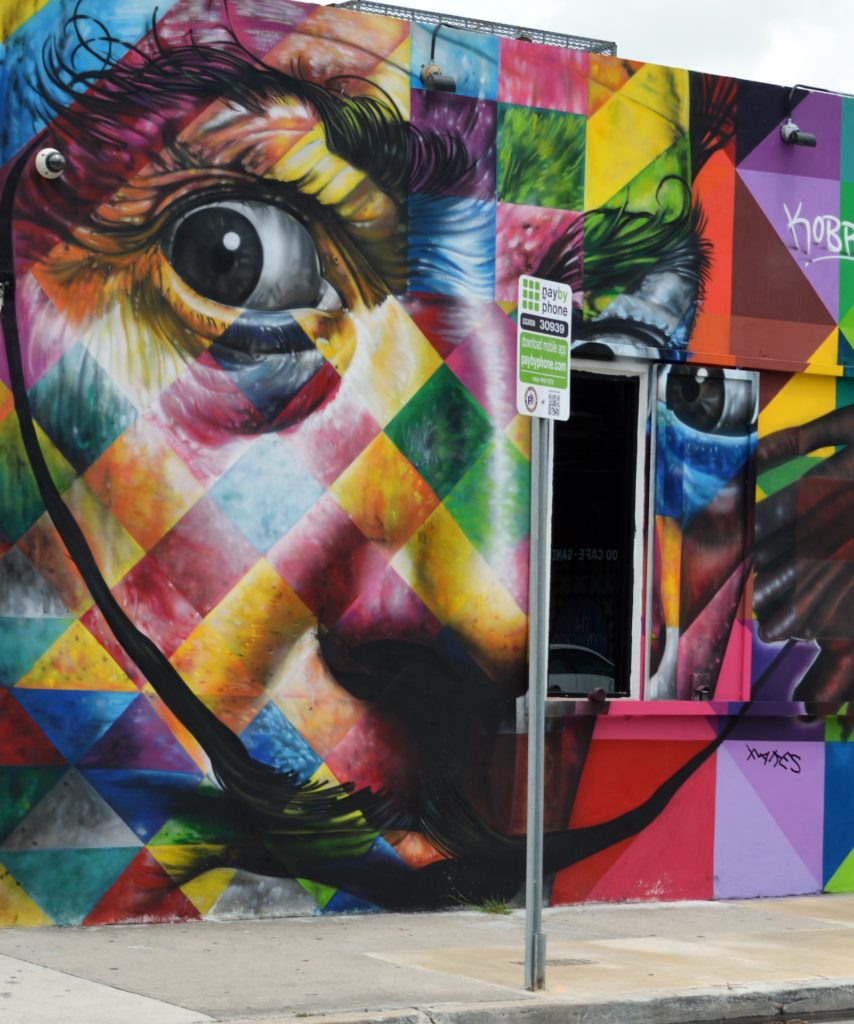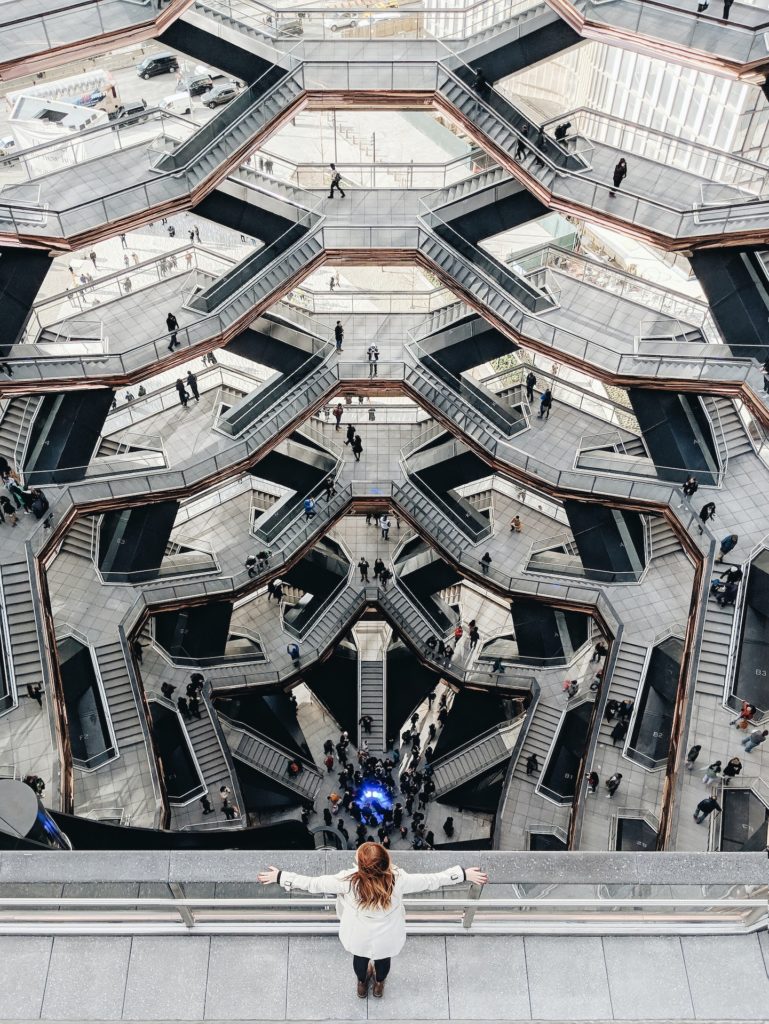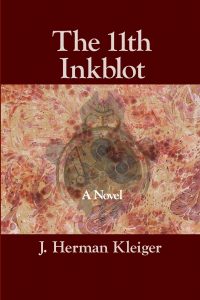Can The Creative Be Mad And The Mad Be Creative?
Apart from the fact that I find this a damned interesting question, my curiosity about madness and creativity stems from a decades-long interest in psychosis, particularly understanding how disorganized and illogical thinking can be identified on psychological tests like the Rorschach.
In each of the books I’ve written about psychosis, disordered thinking, and the Rorschach Test, I’ve been struck by the fact that similar kinds of response patterns can occur in both psychologically disturbed and highly creative individuals. In my novel the 11th Inkblot, I played with the concepts of madness and creativity, as one character lost his mind, only to recover it through a creative process of healing.
Before tinkering with the question of what separates madness from creativity, I always like to begin with my favorite anecdote, which I find a fitting way to begin disentangling creativity from disturbed forms of thought.
Around 1930, the Irish writer James Joyce consulted eminent Swiss psychoanalyst Carl Jung about the nature of Joyce’s daughter, Lucia’s, mental illness. After examining the young woman, Jung told Joyce that Lucia was suffering from dementia praecox, an antiquated name for schizophrenia. Joyce asked how this could be, and Jung replied that her speech and thinking were incoherent, that she invented words, and combined ideas in an illogical manner.
Joyce protested that, in his own writing, he stretched the English language, distorted words, and fused thoughts and images. “What’s the difference?” Joyce asked. Jung responded that Joyce and his daughter were like two people going to the bottom of a river, but where Joyce dove into the deep water, his poor daughter fell to the depths.
Later, Jung wrote that typical patients suffering from psychosis cannot help themselves talking and thinking in disorganized and illogical ways, while artists such as Joyce willed it and developed it into a talent with all his creative force.
As enlightening as I found Jung’s comments to Joyce, I discovered that the supposed link between madness and creativity has actually been around for quite a while.
The Mad Genius or Creative Madman? A Question for the Ages
The nexus between madness and creativity has fascinated and puzzled great thinkers across time. Douglas Eby wrote about our fascination with this subject that takes us back thousands of years. From Plato’s comment that creativity is a “divine madness…a gift from the gods” and Aristotle’s noting that “No great genius was without a mixture of insanity,” philosophers, scientists, writers, and artists have all spoken about the links between madness and creativity.
Shakespeare wrote, “the lunatic, the lover, and the poet are of imagination all compact,” and Edgar Allan Poe said, “Men have called me mad; but the question is not yet settled, whether madness is or is not the loftiest intelligence.” Surrealistic painter Salvador Dali merged incompatible images to create disturbing, dreamlike scenes. Dali referred to himself as a “paranoiac” and believed he possessed the capacity to recognize double images because he felt his disturbed mind was hypersensitive to hidden appearances that were real or imagined. More contemporary artists like Joni Mitchell have said, “An artist needs a certain about of turmoil and confusion.”
Quotes across the centuries leave us believing that in order for one to create, there needs to be a little insanity, or that no genius occurs without a bit of craziness. Having heard from the philosophers and artists themselves, what has science said about the links between mental illness and creativity?
Scientific Studies of Madness and Creativity
Well, it turns out that the issue is far more complex than originally thought, and as is often the case, different researchers reached different conclusions about the link between madness and creativity. Keith Simonton (2006) described different types of research that have looked at the relationship between artistic genius and mental illness.
In the earliest approach, biographies of famous creatives were analyzed to identify evidence of severe mental illness. The findings showed high correlations and produced long lists of creative individuals with likely histories or depression, bipolar disorder, or schizophrenia. Relying less on retrospective investigations, researchers Nancy Andreasen and Kay Jamison looked at the incidence of severe mental illness among contemporary artists and writers, again finding mental illness prevalent among creatives and their family members.
A third approach involves the use of psychological assessment instruments to study the mental processes that might link creative thinking with thought processes found in individuals suffering from mood disorders and psychoses. Such studies have focused on whether creative and mentally ill individuals share similar characteristics of thought and perception.
Cognition of Creativity and the Ideation Madness
Researchers investigated similarities between psychotic and creative thought processes and found that both groups tended to combine and merge incompatible ideas without regard for conventional logic. Creative ideation is characterized by a broad span of attention, openness to unconscious processes, exploring novel connections between what most people would regard as incompatible observations and ideas, and, finally, tolerating irrationality. Although psychotic individuals may display similar cognitive characteristics, the effects of severe mental illness inhibits their creativity.
If there is a contemporary position on the relationship between creativity and madness, it is that the linkage has been overstated. Studies that found high correlations between creativity and madness have been criticized on methodological terms. Many experts hold that the vast majority of highly creative individuals do not suffer from mental illness.
One prominent researcher, Nancy Andreasen, agreed that the link between madness and creativity does not conform to the older romanticized notion of the mad artist. Most highly creative individuals are not mentally ill and those suffering from severe mental illnesses, even if they share a similar cluster of cognitive characteristics, are unable to utilize these for creative purposes. However, she does believe that in rare cases, some creative geniuses are, in fact, mad.
Here, she noted the Nobel Laureate mathematician John Nash, who suffered from schizophrenia and was portrayed in the film, A Beautiful Mind:
Some people see things others cannot, and they are right, and we call them creative geniuses. Some people see things others cannot, and they are wrong, and we call them mentally ill. And some people, like John Nash, are both.
Summary
The age-old notion that highly creative individuals are touched by madness and that their madness gives rise to their creativity is likely to be more myth than fact. Though some creative individuals surely have suffered from different forms of mental illness, they probably represent the minority. This does not mean that some creative artists and writers have not had trauma in their backgrounds and have had periods of battling mental illnesses, but it is clear that psychoses, itself, is not conducive to creative productions.
For the subgroup of highly creative individuals who have suffered from mental illnesses, when symptoms become too severe, they may prove disorganizing and immobilizing and, hence incompatible with high levels of creativity.
Returning to Jung’s words to Joyce about how poor Lucia sank to the depths, while Joyce, himself dove, the importance of intentionality and intact executive functioning seem particularly relevant. Creators may open their minds to incompatible combinations of ideas, which flout conventional logic, but they do so with full intentionality, effort, and cognitive control.
Like one of my all-time favorites, Andy Kaufman, the deceased comedian, who some still maintain faked his death as another of his absurd stunts. Because Kaufman spoke and behaved in odd ways that struck many as bizarre, some suspected he suffered from some form of madness. His friend Bob Zmuda was asked pointedly about this after Kaufman’s death. I recall watching the punctilious interviewer ask “Mr. Zmuda, was Andy Kaufman insane?” Pausing, with a fixed stare, Zmuda responded,
“Why yes, he was…but he worked awfully hard at it!”
Disclaimer
Contrary to concerns expressed by some artists that therapy will zap their creativity, the most important takeaway point is that psychotherapy will not diminish one’s creativity but can help remove psychic roadblocks so that creativity can flourish. Also, young and not so young artists should not link creativity with mental torment or madness, assuming that you can’t have the former without the latter.
Any link that exists is not as universal and simple as was once thought. The universal notion of the “mad creator” is a myth that should be put to rest by parents and teachers!
***
Connect with J. Herman Kleiger here: Twitter, Facebook, Instagram, and Goodreads.
Purchase his book The 11th Inkblot here


